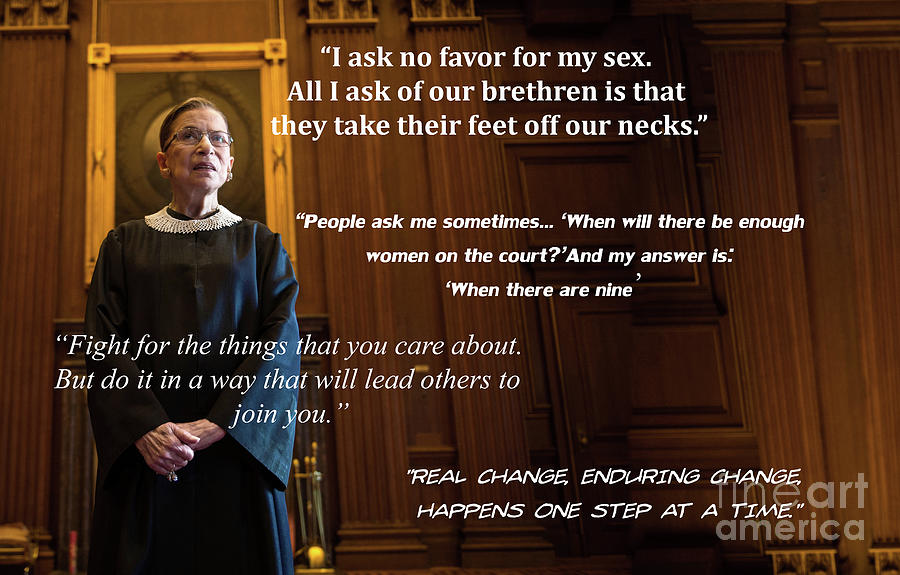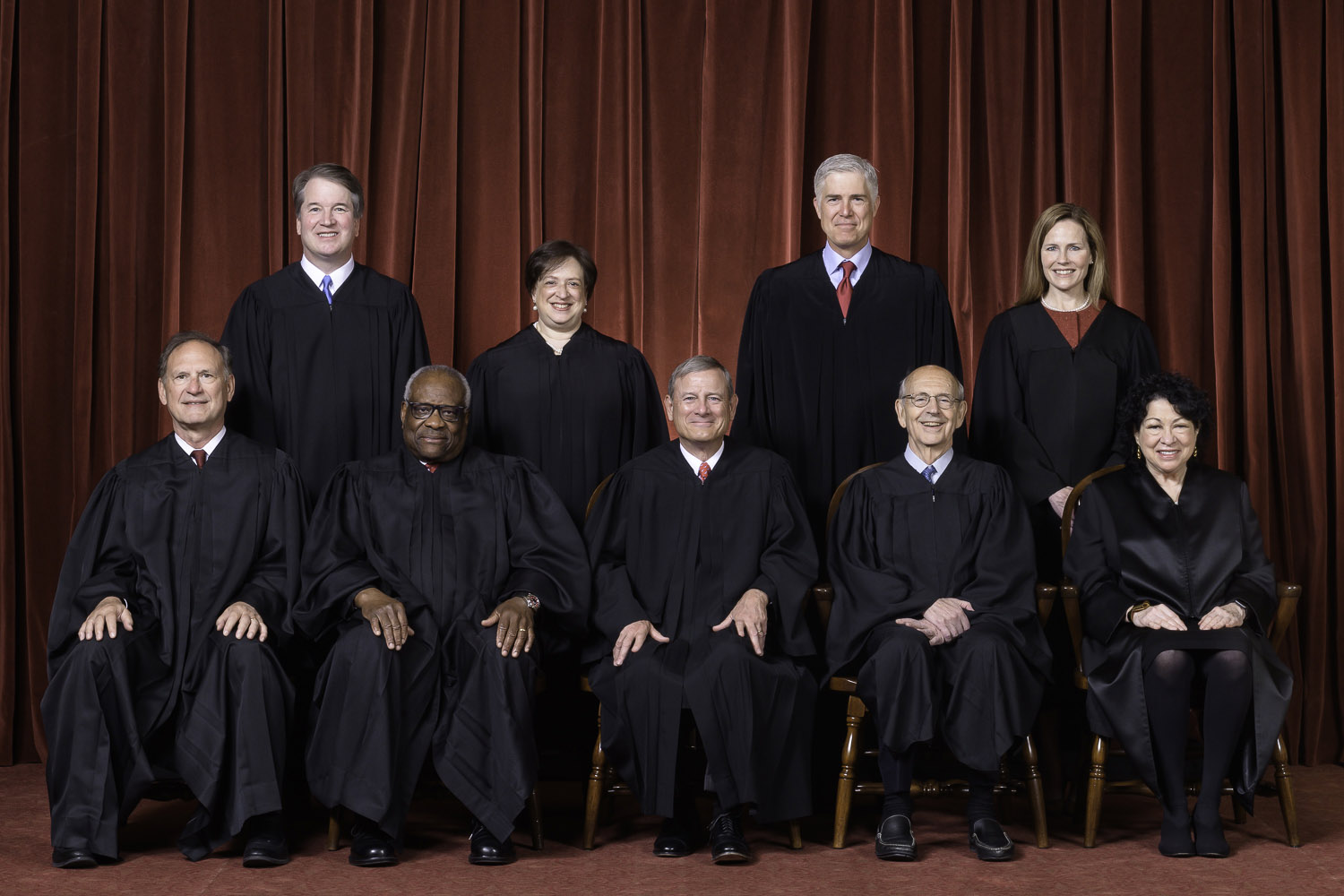Blog Post #2: Mirror Mirror On The Wall, Who's The Highest Court Of All?
Supreme Court in Brief Detail:
The Supreme Court is the highest federal court in the country that resides in Washington, D.C. There are nine justices that have been nominated by various presidents and confirmed by the senate. At the entrance of the Supreme Court Building, the quote "EQUAL JUSTICE UNDER LAW," is displayed. This is the reminder to the justices and the people that the supreme court was made to protect the constitution and ensure the proper use of it in various cases. The Current nine justices are (one Chief Justice and eight Associate Justices): The Honorable John G. Roberts, Jr., Associate Justice Samuel A. Alito, Jr., Associate Justice Clarence Thomas, Associate Justice Stephen G. Breyer, and Associate Justice Sonia Sotomayor, Associate Justice Brett M. Kavanaugh, Associate Justice Elena Kagan, Associate Justice Neil M. Gorsuch, and Associate Justice Amy Coney Barrett.
What Did I Learn About The Supreme Court?
The Supreme Court is not an unfamiliar topic for me to recall. I know the basics of how the court works, how many justices there are and some of the most notable cases that have been taken to the Supreme Court. I learned a little bit more about the cases that have been extremely important to the growth and future cases that will take place in the Supreme Court. The opinions were something I didn’t know about at all, as in how long the process takes, and the effort that goes into creating them. However, when you feel so strongly about something or know the Constitution and law as well as these Justices do, they each probably don’t have much trouble deciding what the correct result should be and writing an opinion that reflects the result. The more challenging aspect of the process is probably trying to satisfy the other eight Justices and convince them to agree with one’s position, or possibly writing a separate dissenting or concurring opinion.
My Important Take-aways:
An important take-away point about the Supreme Court is to remember that the Court holds the most power in the country on a federal level. The Justices serve for life and can’t be removed from their positions if Congress or the President disagree with their decisions. The Supreme Court’s Chief Justice also presides over impeachments of Presidents. This has happened 3 times. The most recent being Donald Trump. It’s a shame he wasn’t fully impeached and convicted because that day would go down in history as a national holiday that I would never forget to celebrate. The things that come out of his mouth are foul and disgusting. So many of the people who back him and agree with his racist and false ideals are just as despicable in my opinion.
What Surprised Me About The Supreme Court?
How Have My Views On The Supreme Court Changed?
 It’s hard to say that I felt a certain way towards the Supreme Court before the videos (Part I & Part II) because it wasn’t something I had really analyzed to any significant extent. However, I noticed that a lot of the white men, mostly older, seem to have very traditional and fixed mindsets. Justice Scalia said that the Constitution really hasn’t changed in the 200-plus years of our country and doesn’t “mean anything different from what it originally meant.” Justice Ginsberg, in response, pointed out that the Constitution today isn’t the same as it was when it was originally written, or even after the Bill of Rights was added in 1791. During the video (Part I), Justice Ruth Bader Ginsburg explained that the Constitution has been amended many times over the years, including the post-Civil War amendments that ended slavery and gave equal protection of law to all citizens, and the 19th Amendment that gave women the right to vote. I was incredibly drawn to Ruth Bader Ginsburg, she held herself with such grace and showed confidence in every word she spoke. She was and will forever be a key role model for young girls and women around the states and nation. She spoke up for those who did not have a voice in that moment and included them as the people under which the constitution is set in place to protect.
It’s hard to say that I felt a certain way towards the Supreme Court before the videos (Part I & Part II) because it wasn’t something I had really analyzed to any significant extent. However, I noticed that a lot of the white men, mostly older, seem to have very traditional and fixed mindsets. Justice Scalia said that the Constitution really hasn’t changed in the 200-plus years of our country and doesn’t “mean anything different from what it originally meant.” Justice Ginsberg, in response, pointed out that the Constitution today isn’t the same as it was when it was originally written, or even after the Bill of Rights was added in 1791. During the video (Part I), Justice Ruth Bader Ginsburg explained that the Constitution has been amended many times over the years, including the post-Civil War amendments that ended slavery and gave equal protection of law to all citizens, and the 19th Amendment that gave women the right to vote. I was incredibly drawn to Ruth Bader Ginsburg, she held herself with such grace and showed confidence in every word she spoke. She was and will forever be a key role model for young girls and women around the states and nation. She spoke up for those who did not have a voice in that moment and included them as the people under which the constitution is set in place to protect.
In class, I have only heard one thing about Native Americans, and it was not anything positive. This is not a criticism of our professor but more so a critique that I wish the course curriculum would include the people who this country belonged to first. We were discussing how the professor had Italian family members who came over right before laws were changed to give immigrants less access to becoming citizens or coming to the United States. A question he asked was if any of our relatives came over as immigrants and he assumed we all were from a different land mass. I wanted to yell and say, “What about the people who were here first? What about my family? Why are we not including my mother’s side of the family?” Her family had been here long before any colonizers, and they were not included in this discussion or mentioned once. In the video, (Part I) Ruth Bader Ginsburg mentioned Native Americans and how, only years after the Constitution was first drafted, was it amended to include them as part of the “We the People” who are citizens of the United States. It might have been brief but it meant a lot that the recognition of Native American rights was there.
Sandra Day O’Connor had some fairly radical thoughts and ideas compared to the older white men who seemed more stuck in old or formal traditions. Justice O’Connor, for example, stressed that every petition for certiorari gets the very same consideration by the Supreme Court, whether it is one drafted by fancy, high-priced lawyers, or one written by a prisoner sitting in jail somewhere. I agree with her, that in a country as big as ours, that is truly remarkable.
Extras:
Some Landmark Supreme Court Cases:
Issue: Who can ultimately decide what the law is?
Issue: Can Congress establish a national bank, and if so, can a state tax this bank?
Issue: Can states pass laws that challenge the power of Congress to regulate interstate commerce?
Issue: In this pre-Civil War case, the question was whether Congress had the constitutional power to prohibit slavery in free territories. A second question was whether the Constitution gave African Americans the right to sue in federal court.
Schenck v. United States (1919)
Issue: Is certain speech, including sending antiwar pamphlets to drafted men, made in wartime and deemed in violation of the Espionage Act, protected by the First Amendment?
Brown v. Board of Education (1954)
Issue: Do racially segregated public schools violate the Equal Protection Clause?
Issue: Does the Constitution require that any individual charged with a felony, but unable to pay for a lawyer, be guaranteed the free assistance of legal counsel?
Issue: Are police constitutionally required to inform people in custody of their rights to remain silent and to an attorney?
Issue: Does the First Amendment prohibit public school officials from barring students' from wearing black armbands to symbolize anti-war political protest?
Issue: Does the Constitution prohibit laws that severely restrict or deny a woman's access to abortion?
Regents of the University of California v. Bakke(1978)
Issue: Can an institution of higher learning use race as a factor when making admissions decisions?







Comments
Post a Comment